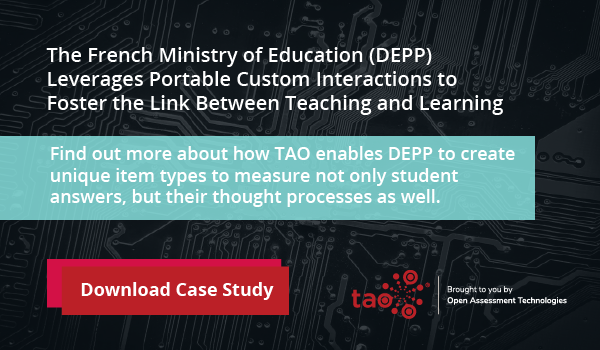Measuring and tracking student data is essential to ensuring that students are learning and progressing in the classroom. Yet, collecting and managing this data to improve teaching and learning can be a challenge, especially as educators may collect a large number of data points in any given school year. By utilizing technology-based assessment tools, they can capture more data with fewer gaps in less time when compared with traditional methods.
Although the transition to technology-based assessment may be new for some, once educators have a handle on the data it becomes clear how powerful these assessment tools can be to enhance student learning and growth.
Challenges to Collecting Data and Measuring Student Learning
While all educators know how important it is to collect accurate student data to measure student learning, it can be difficult to do so regularly. Some of the challenges that come with collecting and managing student data include:
- Providing timely feedback – if the educator cannot collect assignments and get feedback out to students quickly it diminishes the accuracy and effectiveness of the feedback.
- Managing large data sets – some educators may work with over 150 students each day which means tracking 150 individual students and their growth.
- Developing authentic assessments – creating assessments that allow students to show what they know in a variety of ways while allowing for a quick and efficient assessment process can be a challenge.
These challenges can be difficult to overcome. However, by utilizing technology-based assessment tools educators can collect timely data to improve teaching and learning without adding more to their plate. Here are three tips to effectively and efficiently collect student data and measure student learning.
1. Use PCIs in Assessments to Capture Better Data
Portable Custom Interactions, or PCIs, are advanced interactive assessment items that enable educators to impart authentic, real-world simulations into testing and embed 21st Century Skills directly within an assessment. Multi-step PCIs allow educators to assess much more than whether students got a question right or wrong; PCIs and their log data can provide excellent feedback to the educational community—including teachers, researchers, and policy-makers—as to students’ level of engagement, understanding of the subject areas, and how they approach problem-solving. This is in stark contrast to traditional standardized tests where the only piece of information collected is the student’s answer.
The data captured within these items allows educators to paint a more complete picture of what a student can do, and also helps pinpoint areas of confusion in a test, or topics that may require learning interventions. For instance, the French Ministry of Education has been using the TAO platform to embed PCI items into their national assessments for several years now. Interestingly, they found that in one exam instance, when using a PCI that required students to calculate the circumference of a lake, the data showed that students were confusing “circumference” with “area”.
Our partner at Wiquid has developed an open-source mathematics-based PCIs set, that seamlessly integrates with TAO’s open-source assessment platform. The PCI module is based on the javascript libraries of GeoGebra, a tool for engaging learners in mathematics skills. Take a look here.
2. Use Metadata Tagging to Help Analyze Student Data
Metadata is a term used for data that describes other data. By utilizing advanced technology platforms, such as TAO, teachers can tag specific questions with metadata to allow for reporting on an even deeper level such as learning standards, subjects, and even the difficulty level of the question. This gives teachers an enhanced level of understanding and can help educators to analyze student data much more thoroughly and efficiently than ever before.
Using metadata is a way to link specific questions back to learning in the classroom, and even learning standards like the Common Core. This enables educators to pinpoint which parts of their lessons were successful and which parts may need some changes and allows them to isolate student data to improve teaching and learning.
As with all assessment data, collecting and analyzing the data is only important if the teacher can act on the data on time. Assessment should inform learning and educators need systems that can seamlessly transition back into the classroom to improve student learning outcomes.
3. Create a Connected Ecosystem
Any time that you are looking at large data sets from student assessments it is critical that you have a system that is seamlessly integrated and connected so that you do not need to manually input or transfer data. With a centralized, dynamic data warehouse like TAO Insights, users have an easy access point to holistic testing data which can be plugged into any visualization tool.
Having a system that is connected within one platform gives educators total control over the data from item creation, to test taker, to grading, which means that educators can measure student growth from a high-level view. This is an important aspect of data analysis because it allows educators to identify trends and patterns across student groups as well as individual students.
In the end, minimizing the number of processes and data transfers from product to product saves time and reduces the inevitable errors when manually transferring large data sets. All of this means that educators get an accurate view of student abilities and student growth is more accurately measured.
The Bottom Line
Robust online assessment platforms, like TAO, have empowered educators to look at data from a new perspective. Rather than having to manually analyze data, educators can now pull group and individual data at the click of a button, comparing student results with ease.
These advancements in technology are allowing educators to overcome many of the challenges that come with data analysis including giving timely feedback, managing large data sets, and even developing authentic assessments. By including forward-thinking PCIs to test students, using metadata tags to analyze data, and working within a connected system, educators can use data to drive student growth in more ways than they were able to 10 years ago.
To learn more about how online assessment platforms such as TAO Testing are changing the way that we think about assessment, click here.


